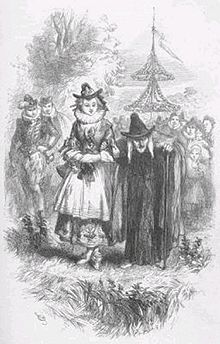My Halloween read
is
is
Mist over Pendle
by
Robert Neill
The forest of Pendle during the early seventeenth century: a wild, inaccessible corner of Lancashire where the ancient fear of demons and witches is still part of life - and death.
When several local people die in mysterious circumstances, Squire Roger Nowell dismisses talk of witchcraft as superstition. But soon a series of hideous desecrations take place, and there are unmistakable signs that a black coven is assembling to plot a campaign of evil and destruction.
****
The Pendle Witches lived during the reigns of Elizabeth I (1558 - 1603) and James I (1603 - 1625). As a result of King James I's firm belief in the existence of witchcraft, an Act was passed which imposed the death penalty "for making a covenant with an evil spirit, using a corpse for magic, hurting life or limb, procuring love, or injuring cattle by means of charms".
The Pendle Witch trials of 1612 are the some of the best recorded witch trials in British History. Altogether twenty people, of whom sixteen were women, were arrested and held for trial at the Lancaster assizes.
Among them were:
Witches of Pendle Forest
Elizabeth Southerns, aka Demdike
Elizabeth Device daughter of Demdike
James Device son of Elizabeth Device
Alison Device daughter of Elizabeth Device
Anne Whittle aka Chattox
Anne Redferne daughter of Chattox
Alice Nutter
Jane Bulcock
John Bulcock son of Jane Bulcock
Katherine Hewitt aka Mould-heels
Isabel Robey
Margaret Pearson
 |
| Two of the accused witches, Anne Whittle (Chattox) and her daughter Anne Redferne. Illustration from William Harrison Ainsworth's 1849 novel, The Lancashire Witches. |
Thomas Potts, clerk to the assizes was charged with the task of writing a full account of the trial. Potts completed his treatise on the witch trial in November 1612.
 |
| Thomas Potts 1612 |
My thanks to project Gutenberg for this extract from the Discoverie of Witches.(1612)
"Where that same wicked wight
Her dwelling
had--
Dark, doleful,
dreary, like a greedy grave
That still for
carrion carcases doth crave,
On top whereof
ay dwelt the ghastly owle,
Shrieking his
baleful note, which ever drave
Far from that
haunt all other cheerful fowl,
And all about
it wandering ghosts did wail and howle"--
The witness by whose evidence this legend was principally
supported, was Jennet Device, a
child about nine years old, and grand-daughter of old
Demdike. A more
dangerous tool in the hands of an unscrupulous
evidence-compeller,
being at once intelligent, cunning and pliant, than the
child proved
herself, it would not have been easy to have discovered.
A foundation
being now laid capable of embracing any body of
confederates, the
indefatigable justice proceeded in his inquiries, and in
the end,
Elizabeth Device the daughter of old Demdike, James
Device her son,
Alice Nutter, Katherine Hewitt, John Bulcock, Jane
Bulcock, with some
others, were committed for trial at Lancaster. The very
curious report
of that trial is contained in the work now republished,
which was
compiled under the superintendence of the judges who
presided, by
Master Thomas Potts, clerk in court, and present at the
trial. His
report, notwithstanding its prolixity and its many
repetitions, it has
been thought advisable to publish entire, and the reprint
which
follows is as near a fac-simile as possible of the
original tract.
And as we celebrate Halloween spare a thought for the hundreds of innocent women who were persecuted and put to death for little more than living a life of poverty and hardship.



No comments:
Post a Comment
Thank you for taking the time to comment - Jaffareadstoo appreciates your interest.